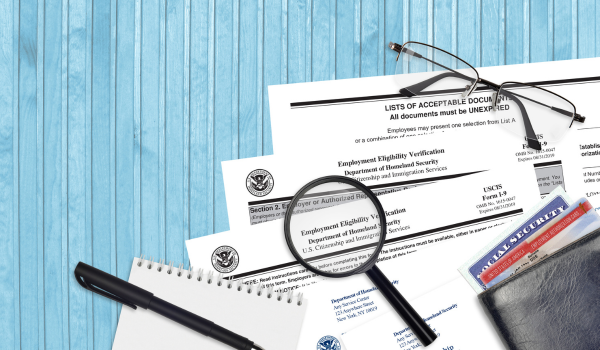What to Include in an Employee Handbook
An employee handbook is more than just an important onboarding document. It outlines your company's...
6 mins

The primary difference between exempt and non-exempt employees is that exempt employees are not eligible for overtime pay under the Fair Labor Standards Act (FLSA), while non-exempt employees are eligible for overtime pay for every hour they work over 40 in a workweek. This article will explain the FLSA and the differences between exempt and non-exempt employee classifications.
Understanding the FLSA
The FLSA stands for the Fair Labor Standards Act. This federal law was enacted in 1938 and sets the standards for minimum wage, overtime pay, hours worked, recordkeeping and child labor in the United States. The FLSA applies to most employees in the private and public sectors, as well as in federal, state, and local governments.
Exempt employees are not required to adhere to certain provisions of the Fair Labor Standards Act (FLSA)/ They are not eligible for overtime pay and are also exempt from the minimum wage laws, timekeeping requirements, and meal and break periods that are mandated for hourly employees. Exempt employees are instead paid a fixed salary, regardless of how many hours they work in any given week. In order to qualify for exempt status, an employee must meet certain criteria related to their job duties and responsibilities, including:
Managers, executives, professionals, and certain administrative personnel are typically eligible for exempt status if they are paid a salary that meets the requirements of the FLSA, and the position’s job duties meet all of the additional criteria. Employers and employees both benefit from exempt status because of the potential for greater work flexibility and earning potential.
It's important to note that exempt employees may still be entitled to other benefits and protections under federal or state law, such as discrimination protections, workers' compensation, and family and medical leave. Additionally, some states have their own overtime laws that provide additional protections for employees beyond the federal FLSA, so it’s necessary to stay up to date regarding the rules, regulations and laws regarding exempt employees in your state.
Non-exempt employees typically receive an hourly rate. The hourly rate must be at or above the Federal minimum wage or the minimum wage required by the state, whichever is higher. Non-exempt employees are eligible for overtime pay for any hours worked over 40 in any given workweek as well as breaks and rest periods. In order to stay compliant with this requirement, employers are required to keep accurate records of all hours worked for each non-exempt employee.
Employees can generally be classified as non-exempt if they meet certain criteria, including:
The primary benefit to being non-exempt is the ability to get paid for every hour worked, and if the employee works over 40 hours in a workweek, they are entitled to receive time and a half for every hour worked over 40 hours. Non-exempt employees are also entitled to receive rest and break periods.
If you’re not sure if your employee is exempt or non-exempt, there is a three-step employee classification test you can apply.
If you’re not sure if your employee is exempt or non-exempt, the FLSA provides several job duty tests, including the executive exemption, administrative exemption, professional exemption, computer employee exemption, outside sales exemption and the highly compensated employee exemption. It’s important to understand that each of these exemptions has highly specific criteria.
It’s important to understand that most employees who receive an hourly rate are considered non-exempt. Therefore, in order to be considered exempt, your employee must be paid a salary that meets or exceeds the current federal rate for salaried employees or the state-mandated rate if it is higher than the federal rate.
Employers should also consider other factors, such as whether the employee has the authority to hire or fire other employees, whether they have to exercise independent judgment and discretion in their work and whether their work is primarily intellectual or if it requires advanced knowledge or skills.
It’s important to understand that job titles alone do not indicate an employee’s exempt or non-exempt classification. Instead, the employer must take the time to thoroughly examine the employee’s actual job duties and responsibilities. If you are unsure about the employee classification for any employee, it’s important to review the FLSA’s employee classifications and possibly consult with a legal expert. Correctly classifying employees can help your business avoid any potential legal and financial risks associated with misclassification.
Understanding the difference between exempt and non-exempt employees is crucial for employers to ensure compliance with the Fair Labor Standards Act. With the help of Exact Payroll, employers can ensure their payroll processes comply with these regulations and that their employees receive the appropriate compensation and benefits they deserve.
An employee handbook is more than just an important onboarding document. It outlines your company's...
6 mins
The I-9 form was changed to streamline it and make it...
Finding a channel for HR outsourcing can be a big help to businesses. And the source for your HR...
4 mins
Exact Payroll Inc
3993 Huntingdon Pike Suite 110
Huntingdon Valley, PA 19006
Mon - Fri: 8:30AM - 5:00PM
Company
Subscribe to Newsletter